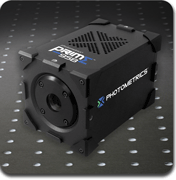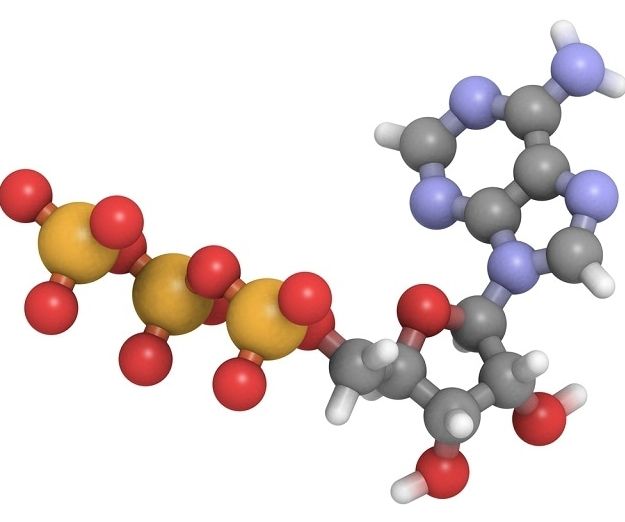Page 11109
Jun 9, 2016
Physical objects could, theoretically, pass through a wormhole at the centre of a black hole
Posted by Sean Brazell in category: cosmology
Objects may be able to pass through a wormhole at the centre of a black hole despite extreme forces.
Jun 9, 2016
Welcome to Larry Page’s Secret Flying-Car Factories
Posted by Klaus Baldauf in category: transportation
Jun 9, 2016
Scientific camera from Photometrics features high quantum efficiency
Posted by Karen Hurst in categories: electronics, quantum physics
Featuring backside-illuminated sensor technology providing 95% quantum efficiency, the Prime 95B from 2016 Innovators Awards silver-level honoree Photometrics is reportedly three times more sensitive than the current generation of sCMOS cameras. The camera features a GSENSE400BSI-TVISB scientific CMOS (sCMOS) sensor from Gpixel Inc., which is a 1.44 MPixel sensor with a 11 µm square pixel size that can achieve a frame rate of 41 fps in 16-bit and 82 fps in 12-bit. The Prime 95B, according to Photometrics, is optimized for low-light microscopy and life sciences imaging applications because of its ability to collect nearly all available light, and maximize the signal-to-noise ratio of the experiment while minimizing cellular photo damage. Additionally, the camera features forced air or liquid cooling options, as well as a PCIe and USB 3.0 interfaces.
Jun 9, 2016
Want To Stay Healthy? You’ll Need To Become A Human-Animal Hybrid
Posted by Karen Hurst in categories: biotech/medical, health
No thanks.
Biologists have been mixing the DNA of different animals since the 1970s, but the idea of injecting the genes of animals into humans remains taboo. Called transgenics, it’s a practice that could cure illness in the future — and eventually reshape our species. Here’s what you need to know about it.
Illustration by Jim Cooke.
Continue reading “Want To Stay Healthy? You’ll Need To Become A Human-Animal Hybrid” »
Jun 9, 2016
Chemical reaction lights the way for tracking microRNA in living organisms
Posted by Karen Hurst in categories: biological, genetics
The ability to track molecular events inside the cells of living organisms offers a powerful window into fundamental biological processes, but methods for visualizing RNA in vivo without interfering with cell processes have been elusive. Now, researchers have developed a light-induced chemical reaction that accomplishes this feat in live zebrafish embryos (ACS Cent. Sci. 2016, DOI: 10.1021/acscentsci.6b00054). It is the first technique for detecting specific strings of nucleic acids in live vertebrates that doesn’t require genetically modifying the organism. What’s more, it’s sensitive enough to visualize the expression of microRNAs, small noncoding RNAs that act as puppetmasters of gene expression.
To do the reaction, chemical biologist Nicolas Winssinger, biochemist Marcos Gonzalez-Gaitan, and their colleagues at the University of Geneva designed two nucleic acid probes that each complement and bind to adjacent halves of a target microRNA sequence. The researchers conjugated one probe to a ruthenium complex that absorbs visible light and the other to a fluorogenic rhodamine that lights up when its azide bonds are cleaved. When the probes attach to the target sequence, the two reagents come close enough to react. Shining a light on the sample activates the ruthenium which then reduces the azide in the rhodamine conjugate, releasing its fluorescence. The dependence on external light allows researchers to control when the reporting reaction happens, Winssinger explains.
The team first developed the system three years ago (Chem. 2013, DOI: 10.1002/chem.201300060) for use in cultured cells; here, they adapted it for use in just-fertilized zebrafish embryos. “That’s really not trivial,” says Winssinger. The probes had to be nontoxic, stable for a day or more, and powerful enough to work even after being diluted through cell division.
Continue reading “Chemical reaction lights the way for tracking microRNA in living organisms” »
Jun 9, 2016
Living computers and nano-robots: what’s the future for DNA manipulation?
Posted by Karen Hurst in categories: biotech/medical, computing, nanotechnology, robotics/AI
Jun 9, 2016
Scientists design energy-carrying particles called ‘topological plexcitons’
Posted by Karen Hurst in categories: particle physics, solar power, sustainability
Scientists at UC San Diego, MIT and Harvard University have engineered “topological plexcitons,” energy-carrying particles that could help make possible the design of new kinds of solar cells and miniaturized optical circuitry.
The researchers report their advance in an article published in the current issue of Nature Communications.
Within the Lilliputian world of solid state physics, light and matter interact in strange ways, exchanging energy back and forth between them.
Jun 9, 2016
Using Adenosine Triphosphate to Create Biological Super-Computers
Posted by Karen Hurst in categories: biotech/medical, computing, engineering, nanotechnology, sustainability
Machines running on human energy? Yes, it can happen, according to Dan Nicolau, Jr. from the Department of Integrative Biology at the University of California. Nicolau and his colleagues successfully completed a proof-of-concept study of a book-sized computer that runs on adenosine triphosphate (ATP), a biochemical that releases energy in cells and aids in energy transfer.
The study results published in the Proceedings of the National Academy of Sciences (PNAS), describe the combination of geometrical modeling and engineering as well as nanotechnology to create circuitry that uses 1.5 × 1.5 cm in area and the naturally occurring protein to operate.
A More Sustainable Option
Continue reading “Using Adenosine Triphosphate to Create Biological Super-Computers” »
Jun 9, 2016
US intelligence wants real-time behavior monitoring software
Posted by Karen Hurst in category: surveillance
Think your personal time is yours? Think again.
A new initiative from the U.S. Office of the Director of National Intelligence aims to create an intelligent surveillance system that can analyze live video and spot suspicious behavior in real time. According to Defense One, the research project is called Deep Intermodal Video Analytics (a.k.a. DIVA) and it will be a joint effort between academics, the private sector and ODNI’s Intelligence Advanced Research Projects Agency.
In an announcement, IARPA officials laid out the project’s goals: “The DIVA program will produce a common framework and software prototype for activity detection, person/object detection and recognition across a multicamera network,” IARPA officials wrote. “The impact will be the development of tools for forensic analysis, as well as real-time alerting for user-defined threat scenarios.” In other words: the system should be able to identify suspicious behavior in real-time.
Continue reading “US intelligence wants real-time behavior monitoring software” »















